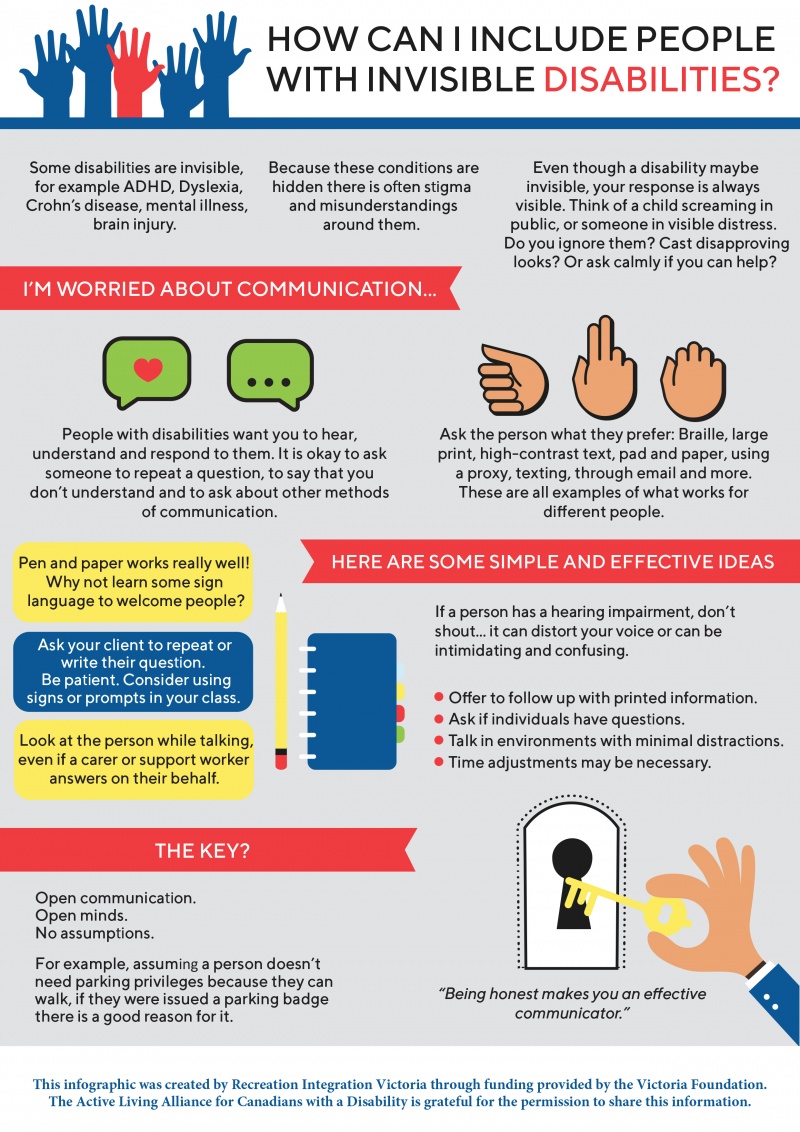HOW CAN I INCLUDE PEOPLE WITH INVISIBLE DISABILITIES?
Text version
Some disabilities are invisible, for example ADHD, Dyslexia, Crohn’s disease, mental illness, brain injury.
Because these conditions are hidden there is often stigma and misunderstandings around them.
Even though a disability maybe invisible, your response is always visible. Think of a child screaming in public, or someone in visible distress. Do you ignore them? Cast disapproving looks? Or ask calmly if you can help?
I’M WORRIED ABOUT COMMUNICATION...
People with disabilities want you to hear, understand and respond to them. It is okay to ask someone to repeat a question, to say that you don’t understand and to ask about other methods of communication.
Ask the person what they prefer: Braille, large print, high-contrast text, pad and paper, using a proxy, texting, through email and more. These are all examples of what works for different people.
HERE ARE SOME SIMPLE AND EFFECTIVE IDEAS
Pen and paper works really well!
Why not learn some sign language to welcome people?
Ask your client to repeat or write their question. Be patient. Consider using signs or prompts in your class.
Look at the person while talking, even if a carer or support worker answers on their behalf.
If a person has a hearing impairment, don’t shout... it can distort your voice or can be intimidating and confusing.
Offer to follow up with printed information.
Ask if individuals have questions.
Talk in environments with minimal distractions.
Time adjustments may be necessary.
THE KEY?
Open communication.
Open minds.
No assumptions. For example, assuming a person doesn’t need parking privileges because they can walk. If they were issued a parking badge there is a good reason for it.
“Being honest makes you an effective communicator.”
This infographic was created by Recreation Integration Victoria through funding provided by the Victoria Foundation. The Active Living Alliance for Canadians with a Disability is grateful for the permission to share this information.





